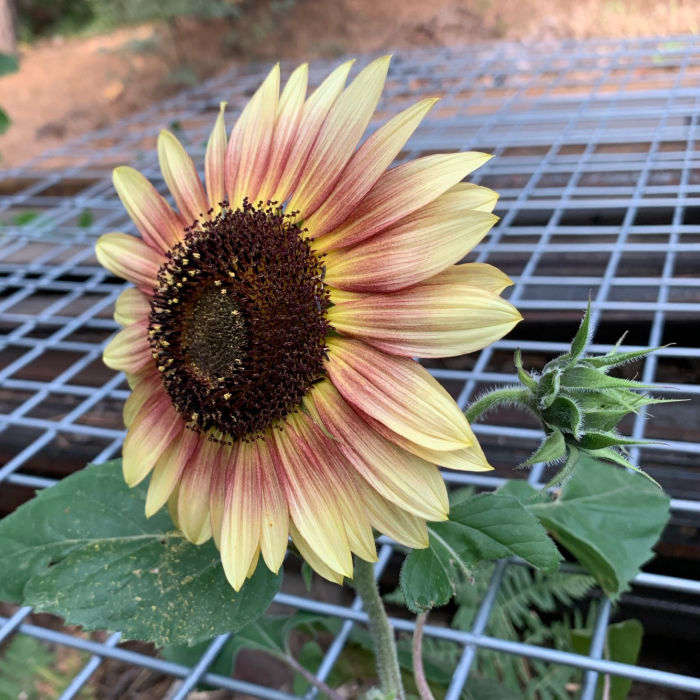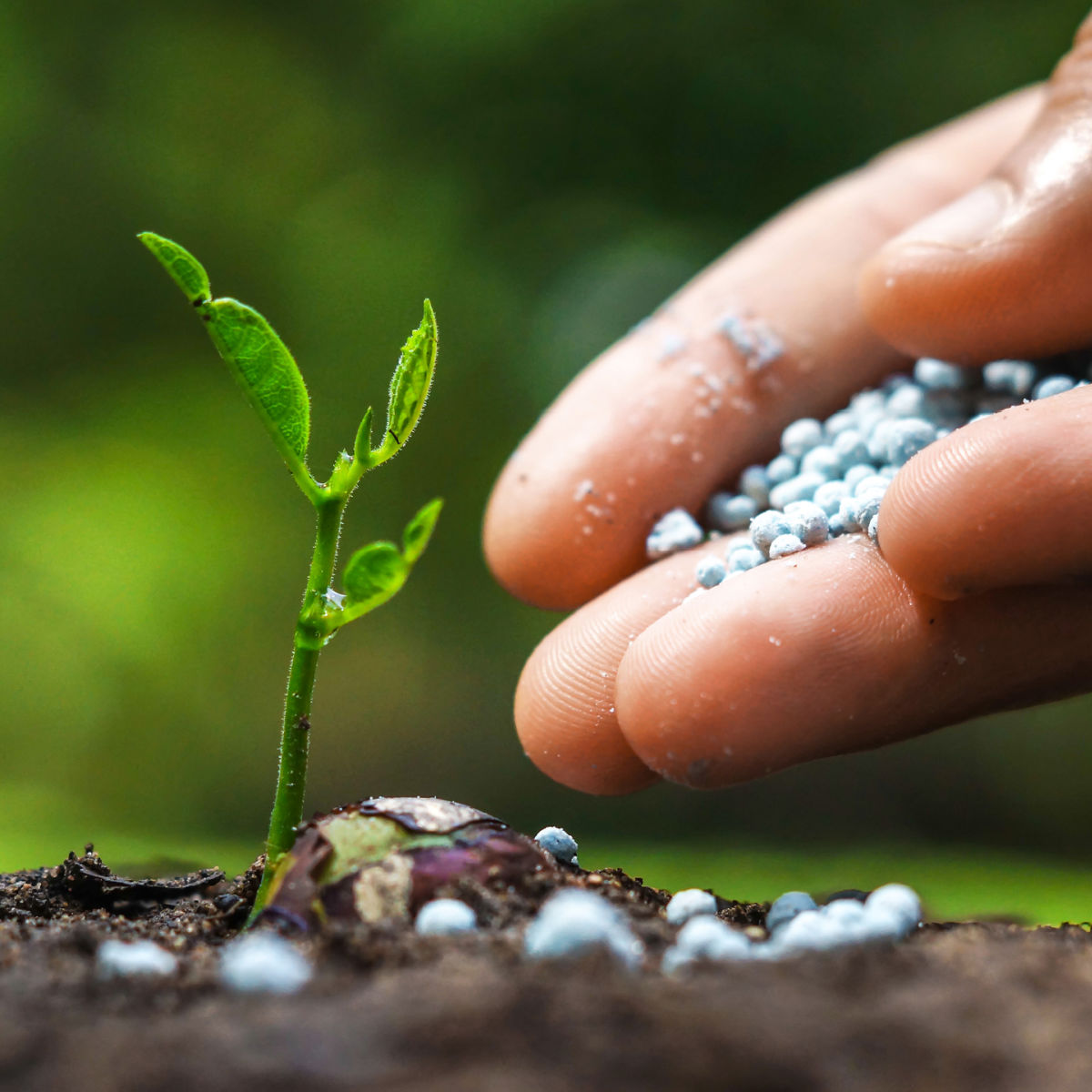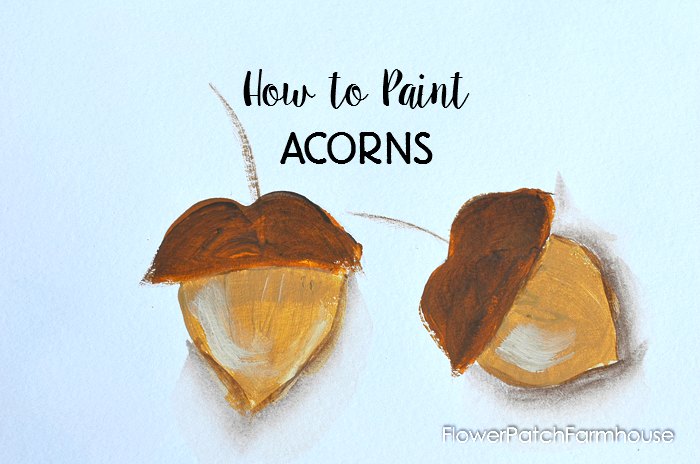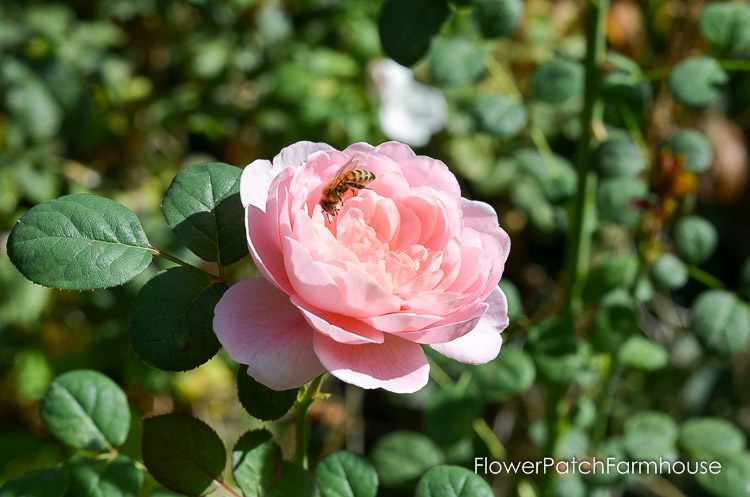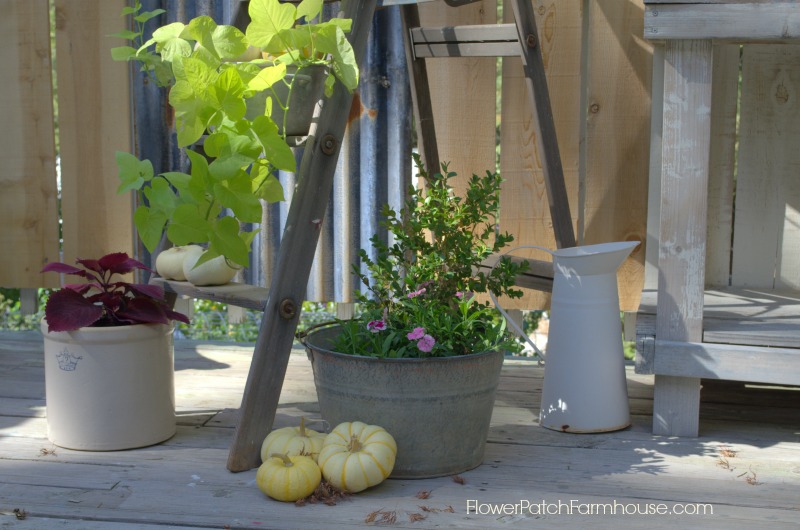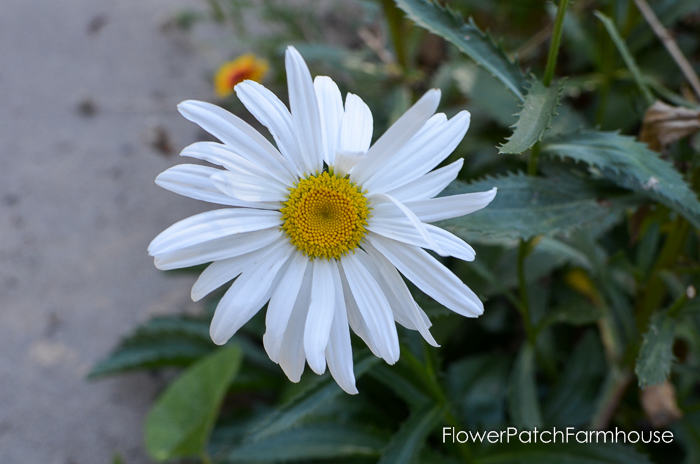Mammoth Sunflower
Unleash the Giant: Your Ultimate Guide to Growing Mammoth Sunflowers!
A mammoth sunflower is a type of sunflower that can grow up to 12 feet tall and produce large, beautiful blooms that can reach up to 1 foot in diameter.
Growing mammoth sunflowers is a great way to add a touch of drama and color to your garden, and they’re surprisingly easy to grow, even for beginners.
In this blog post, let’s go through a step-by-step guide to growing mammoth sunflowers in our gardens.
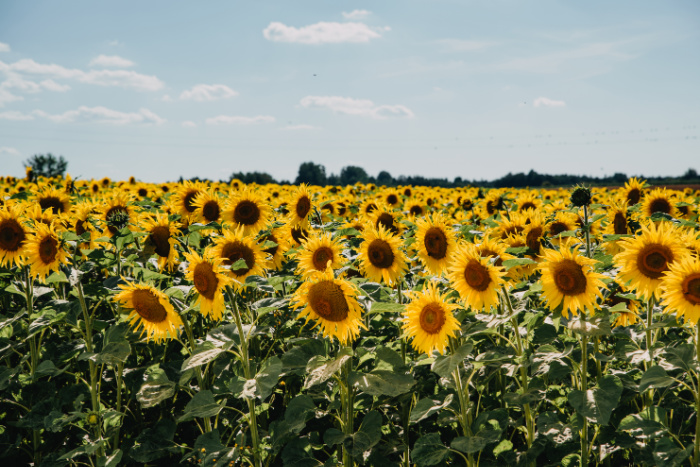
Choosing a Location
The first step in growing a mammoth sunflower is to choose the right location. Mammoth sunflowers need full sun, which means they should be planted in an area that receives at least six hours of direct sunlight each day.
They also need well-draining soil that is rich in nutrients. Ideally, you should choose a location that is protected from strong winds or staked well, as the tall stalks of the sunflowers can be easily damaged.
I like to grow mine against my fence, which is mostly just cattle panels.
Preparing the Soil
Before planting your mammoth sunflowers, it’s important to prepare the soil. Start by clearing the area of any weeds or debris.
Then, use a hoe or shovel to loosen the soil to a depth of at least 12 inches. This will help to improve drainage and allow the sunflower roots to grow deep into the soil.
If you already have already improved your soil and it is well-draining this step is unnecessary and I prefer a no-dig approach.
You can also add compost or well-rotted manure to the soil to improve its nutrient content.
All the best garden tips
Composting Made Easy!
Compost helps you create great soil. Great soil makes growing anything so much easier. Making compost is not hard and you can even DIY some rather good-looking compost bins.
Planting the Mammoth Sunflower Seeds
Once you’ve prepared the soil, it’s time to plant the sunflower seeds. Mammoth sunflowers can be planted directly in the ground in the late spring or early summer, once the soil has warmed up to at least 50 degrees Fahrenheit.
Start by digging a hole that is about 1-2 inches deep and placing a sunflower seed in the hole. Cover the seed with soil and press down firmly to ensure good soil-to-seed contact.
Space the seeds at least 6 inches apart to allow for proper growth.
Or you can start them indoors 4 to 6 weeks prior to your last frost date.
Caring for the Sunflowers
Once your mammoth sunflowers have been planted, it’s important to care for them properly to ensure healthy growth.
Here are some tips for caring for your sunflowers:
Watering: Sunflowers need regular watering, especially during hot, dry weather. Water the plants deeply once a week, making sure to soak the soil to a depth of at least 6 inches.
Fertilizing: Sunflowers are heavy feeders and require regular fertilization to ensure healthy growth. You can use a balanced fertilizer, such as a 10-10-10, once a month during the growing season.
Mulching: Mulching around the base of the sunflowers can help to retain moisture in the soil and prevent weed growth. Use a layer of organic mulch, such as straw or shredded leaves, to a depth of at least 2 inches.
Supporting the Stalks: As your sunflowers grow taller, they may need support to prevent them from bending or breaking in strong winds. You can use a stake or bamboo pole to support the stalk, tying it loosely with twine.
Dealing with Pests and Diseases: Sunflowers are generally resistant to pests and diseases, but they can occasionally be affected by aphids, slugs, or fungal infections. If you notice any signs of pest or disease damage, you can use an organic insecticide or fungicide to treat the plants.
Harvesting the Sunflower Seeds
Mammoth sunflowers produce large, nutritious seeds that can be harvested in the fall, once the flower heads have begun to dry out and turn brown.
To harvest the seeds, use a sharp knife or pruning shears to cut off the flower head, leaving a few inches of stem attached.
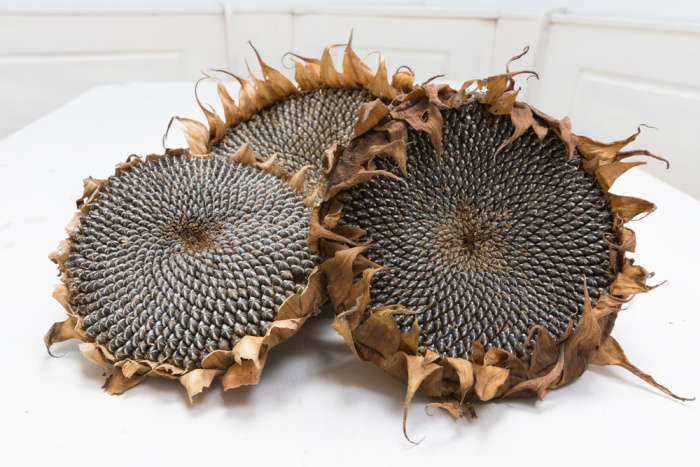
Hang the flower head upside down in a cool, dry place for several weeks to allow the seeds to dry out completely.
Once the seeds are dry, you can remove them from the flower head by rubbing them gently with your hands or using a fork to separate them from the seeds.
Storing the Mammoth Sunflower Seeds
Once you’ve harvested your sunflower seeds, it’s important to store them properly to ensure that they stay fresh and don’t spoil.
Store the seeds in an airtight container, such as a jar or plastic bag, in a cool, dry place. You can also freeze the seeds to extend their shelf life.
Using the Sunflower Seeds
Mammoth sunflower seeds are a tasty and nutritious snack that can be eaten raw or roasted.
To roast the seeds, spread them out in a single layer on a baking sheet and bake them in a preheated oven at 350 degrees Fahrenheit for about 10-15 minutes, or until they are lightly browned and crispy.
You can also use the seeds in salads, trail mixes, or baked goods.
In addition to their culinary uses, sunflower seeds can also be used for bird feeders or as a decorative element in crafts or flower arrangements.
Saving Seeds for Next Year
If you want to save the seeds from your mammoth sunflowers to plant again next year, it’s important to select the best plants with the largest, healthiest blooms.
Wait until the flower heads have dried out and turned brown before harvesting the seeds. Then, separate the seeds from the flower head and store them in an airtight container in a cool, dry place until you’re ready to plant them again.
Using those small desiccant packs inside with the seeds helps to keep them from mildewing.
Attracting Pollinators
Mammoth sunflowers are a great way to attract pollinators to your garden, such as bees and butterflies.
These insects are essential for pollinating plants and ensuring a healthy ecosystem.
To attract pollinators, plant a variety of flowers that bloom at different times throughout the growing season, and avoid using pesticides that can harm beneficial insects. This includes organic ones.
Sunflower Companion Plants
Companion planting is the practice of planting different plants together to benefit each other in some way.
One example of companion planting for a mammoth sunflower is to plant them with beans, peas, or other legumes.
These plants have nitrogen-fixing bacteria in their roots that can help to improve soil fertility and provide nutrients for the sunflowers.
Another option for companion planting is to plant sunflowers with herbs, such as basil or oregano, which can repel pests and attract beneficial insects.
Sunflowers can be grown with cucumbers to provide shade and support. Win, win.
You can also plant sunflowers with other flowers, such as zinnias or marigolds, which can help to attract pollinators and provide a colorful display.
See More on Growing Sunflowers
From Seed to Sunflower: How to Grow Your Own Stunning Blooms! Grow for show or grow for cutting. What you plant may depend on what you want to do with them.
Incorporating Sunflowers into Your Landscape
Mammoth sunflowers are not only great for gardens, but they can also be used to create stunning landscape designs.
You can plant them in rows to create a living fence or screen or use them as a backdrop for other plants or flowers.
Sunflowers also look great in pots or containers on a patio or balcony. Just remember the right size pot for the plant. These sunflowers get very top-heavy!
In conclusion, growing mammoth sunflowers is a fun and rewarding gardening project that can provide a host of benefits, from attracting pollinators to providing nutritious seeds for snacking.
With a little bit of planning and care, you can successfully grow these beautiful giants and enjoy their beauty and benefits for years to come. So why not give it a try and see what mammoth sunflowers can do for your garden and landscape?
All the best garden tips
Cut Flower Gardening for Beginners!
Here you will get tips on choosing beautiful blooms for cut flower gardening, planting them correctly, and taking care of them once they’re blooming.
One of the easiest things to paint is the Sunflower. For a beginner-friendly Sunflower painting tutorial just hop on over to my painting website here.
